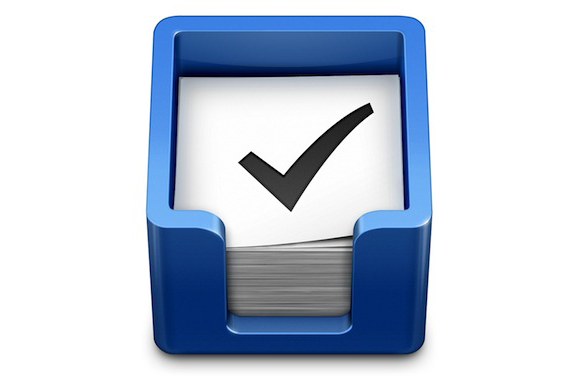It’s not easy being green, sings Sesame Street superstar Kermit the Frog.
It’s not easy creating and managing org charts either !!!
Gathering the data, going through the tedious process of assembling it, creating an org chart design, and then manually inserting all of the information for everyone on the team. Hours pass, days even, before the org chart is finalized. Then, as you spend additional time cross-checking it, and making it ready to use, you find there have been further organizational changes, sometimes major ones. Not back to square 1 exactly, but often it feels like that….or worse.
It may not be easy, but in the same way that Kermit concludes being green isn’t so bad, you can make the process of creating and managing the org charts in your organization more manageable, more enjoyable, and more interesting…for you and for everyone else.
Here are a few suggestions:
- Make Your Org Charts Inclusive.
Set your vision right, from the start. Many organizations think their org charts should be confidential, made primarily by the few, and for the few. The orientation is towards “command and control” rather than sharing and collaboration. But organizations have changed, and today are continuing to change even faster. They are opening up, and the tools managers are using to organize and guide work inside them – including org charts – need to change too.
Make your org charts inclusive, from the start. Chart the whole organization, not just the executive team and managers, and not just limited to your full time employees. If you have interns, part-time, temp and other contingent workforce relationships, and if you have consultants on staff supplied by other organizations and working as part of your team, add them in. If you have supplier, partner or client staff “on site” (meaning connected to you physically or virtually), working in close collaboration with your team, add them in too.
By making your org charts inclusive and comprehensive you are laying the foundation for a more engaging process for communication and collaboration across the entire team.
- Make Your Org Charts Accessible.
Is using your org chart to find something out like looking for a needle in a haystack? Who “owns” your org charts anyway? For tomorrow’s organizations it is no longer just HR or IT. Technology is transforming workplaces. It is one stream of the “software eating the world” meme (coined by Netscape founder Marc Andreessen) you may be hearing a lot of references to these days.
Org charts are an asset for the entire organization, and they should be easily accessible to everyone. How many times do you hear of the paper based org chart that sits in the drawer? Or the months-out-of-date pdf parked at the back end of a dead intranet link the IT team has even forgotten to maintain? Or the cumbersome process followed by the “org chart builder” in your HR team to create and update org charts that sit in a file directory no one has access to. Do these sound familiar?
Make your org charts accessible. Your org charts should be web-based for easy access & integration into corporate computing environments. They should be in the cloud so they are available at any time, on line, in real time, anywhere from any device. They should be easy to navigate and search. And consider the role of your stakeholder communities in maintaining and updating the information, as well as their needs in using it.
By sharing some responsibility with (or delegating it fully to) your individual team managers and members, you are creating powerful incentives to collaborate, while reducing the administrative time and effort associated with maintaining that information, and ensuring more accurate and up to date results.
There are no more obvious examples of the power of crowds in organizing and curating information than Wikipedia and the Google search engine. Your org chart is your people. Your people are your org chart.

Man sticking his head in haystack, side view
- Make Your Org Charts Relevant.
Relevance comes from accurate, updated, useful information. If your org charts reflect only “chain of command” data they will be entirely uninteresting to most of the people you thought you have made them for.
Names, contact information, photos, personal profile information, titles, recent accomplishments, credentials, career aspirations, retirement dates, all of these pieces of information are relevant and useful for everyone in the organization, and foster higher levels of engagement across teams. And think about all the time saved for HR and IT stakeholders in responding to ad hoc requests for human resources information, establishing and maintaining staff lists and directories, and keeping track of job counts, vacancies and other workplace related issues.
Your org charts need to break free of the old “name, rank, serial number” information common to the “command and control” mindset that used to prevail. Organizations are becoming more and more diverse, business environments are increasingly dynamic, work patterns are changing, organizational boundaries are blurring. To be relevant your org charts need to map this new reality and become an information tool your staff can access and use to help them navigate all of this complexity, easily. Plus, the move online is “good for green” reducing needs to publish and print paper based charts. Kermit would be pleased!
Make the process of getting introduced to the organization through your org chart an element of your training and onboarding process for new hires. Get them comfortable with the visibility and transparency of your organization from Day 1. Use organizational charts as a frame of reference for discussing changes in business strategy or operations, and in explaining restructurings. Use them as a tool for individual employee assessments and career development discussions so your managers can collaborate on creating the most meaningful work experience and training path for each member of your team.
- Make Your Org Charts Strategic.
Do you yawn when you start thinking about your org chart, or is your curiousity piqued to see what changes are in motion and where the organization is going?
Org charts provide an exceptional foundation for aligning corporate, departmental, team and personal goals with overall business performance. They also can help team leaders model for and plan succession, while team members can think about their career path and skills development opportunities. Instead of simply communicating a top down view of the organizational structure, they can facilitate a multitude of constructive and productive conversations about where the organization is moving and how team members see themselves being engaged and involved.
When everyone on the team can see – literally – how their activities and those of their team mates line up with organizational objectives, you are creating a solid foundation for engagement. Automated organizational charts also enable organizations to quickly adapt to ever-changing business requirements and market conditions by modeling strategic “what-if?” planning scenarios that can help determine the optimal structure for now and for multiple versions of the future – from disaster recovery planning through to mergers and business integrations.

- Make Your Org Charts Manageable.
Last, but certainly not least, you need to make the process of creating and updating your org charts manageable, increasing efficiency and lowering cost. Manual chart creation is time consuming, and not fun. It is also error prone, resource intensive and overly costly. Most organizations simply cannot afford material time and dollar investments.
Your org chart design tools and process needs to be simple to create, and simple to maintain on an ongoing basis. You need to be able to establish a roles based position-to-position hierarchy, that exists independently of the people involved at any given level of the business. And you need to be able to quickly change that structure just as efficiently as you can swap people in and out of those roles. This way changes in personnel don’t lead to “orphaned” staff or business areas.
You need to be able to visualize and display organizational relationships and displays in a muiltitude of formats that reflect the many different structures and processes at work within your organization to get things done. It needs to be possible to easily and quickly upload information, and maintain synchronization between your org charts and the operational data supporting them.
In larger organizations with more complex HR management information systems, even higher levels of integration are required to ensure automation works smoothly. Similarly, being able to manage users, and their access to the data underlying the org chart, becomes important. All of these issues of workflow, administration and security, speak to an overriding goal of creating a manageable environment for those who are responsible for maintaining and updating it.
******
That’s the journey we are on at Organimi. We’re passionate about organizational structure – about org charts and photoboards and directories – because we think they can do a whole lot better job of making organizations more human places to work..for all of us…wherever we are and whatever we are doing, by making these tools better.
We’ve created Organimi with these tips, features and capabilities squarely in mind. We don’t have them all yet, but we’re on the way there. And we welcome you to join us, give us your feedback, and help us achieve your goals, as well as ours, for making Organimi a better and more useful tool for everyone in your organization.
With Organimi, the benefits of embracing automated organizational charting can be realized without overhauling existing business processes or extensive training or IT change management projects. You don’t need to reinvent the wheel, or blow the bank either. It’s a free app for organizations with up to 500 members. We want you to use it. If you are a consultant who works with a number of organizations, you can use it to deliver additional value to them.
The tips we’re describing above can be followed, and the benefits we’ve identified can be achieved, without complex IT projects, by any member of your team who is comfortable with the Internet and cloud based applications like Facebook, Twitter or Instagram. They can get you up and going fast. A small time investment can yield big benefits for your team.
The benefits?
Benefits for the Business. Improve communication from top to bottom. By providing knowledge-workers with an accurate view of the entire organization, combined with critical human resource data, communication throughout the organization can be improved immediately. Align corporate strategy with the optimal organizational structure. By visualizing the entire organizational structure of the workforce, strategic, tactical and operational issues can be more quickly identified and resolved and operational efficiency can be improved on a proactive basis. Most importantly, start engaging your staff in more meaningful ways; let people get to share more about themselves, and learn more about each other. Put the “human” back in the human resources within your organization.
Benefits for IT. By making the data visual and accessible IT can continuously monitor and assess workforce data integrity across the organization. Data can be captured and visualized from any source. You can also provide the entire organization with a visual representation of reporting relationships, deployed to any application, device or system, reducing needs for ad hoc service requests to be answered and freeing up IT time for highest best use projects. You can also allow managers or team members to modify information related to their span of control through delegated administrative permissions and security controls. You can also ensure that the organization remains in compliance with government, industry and company regulations relative to workforce credentials, skillsets and other protocols. With an automated organizational charting solution, it’s possible to maintain accurate, enterprise-wide workforce compliance documentation and conduct compliance audits on a consistent basis.
Thank for reading!
If you like what you are reading, please share with your network. Spread the word.
And don’t forget to give Organimi a try. Have some fun creating your own org chart for your organization, and sharing it with some of your colleagues.
The Organimi Team

